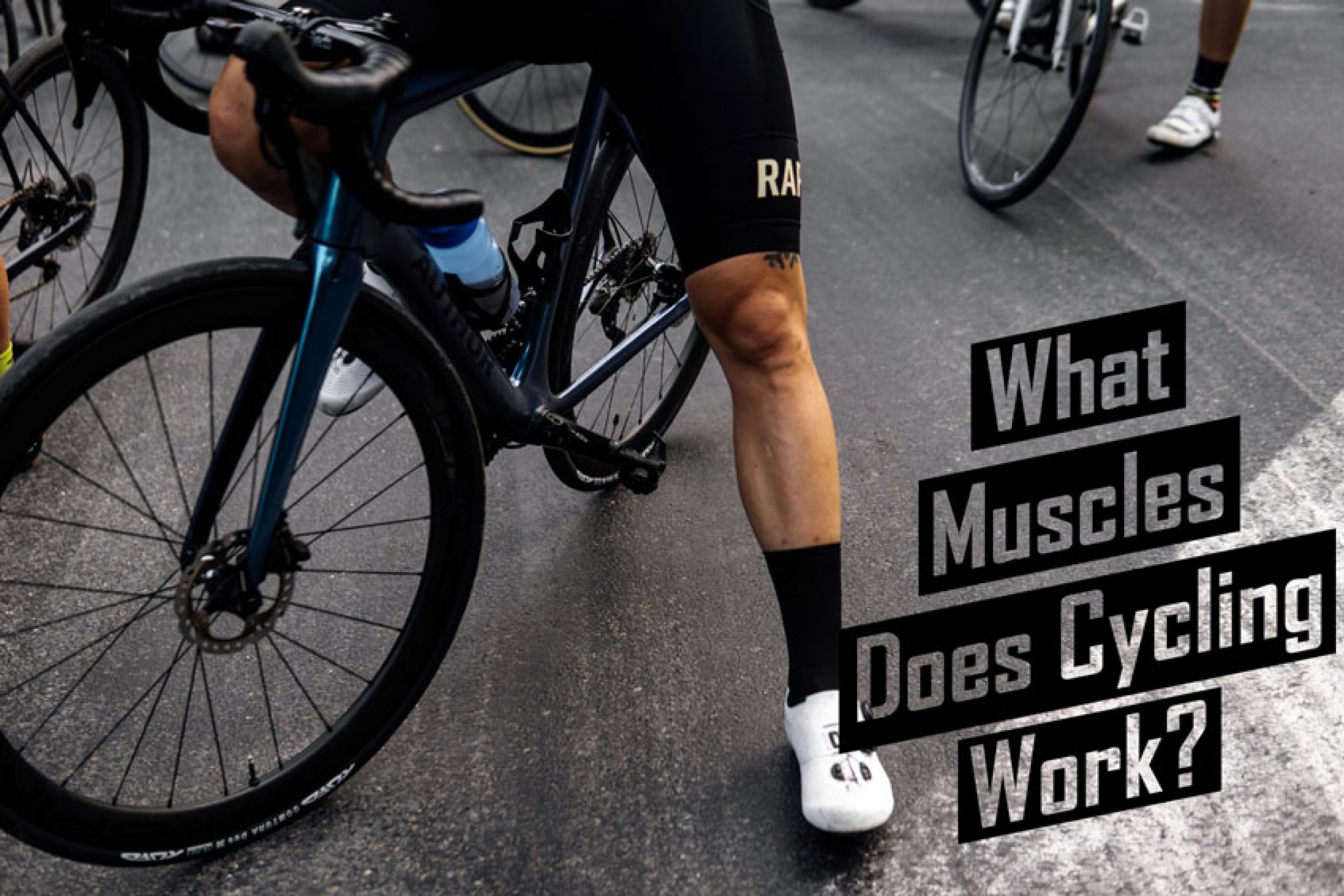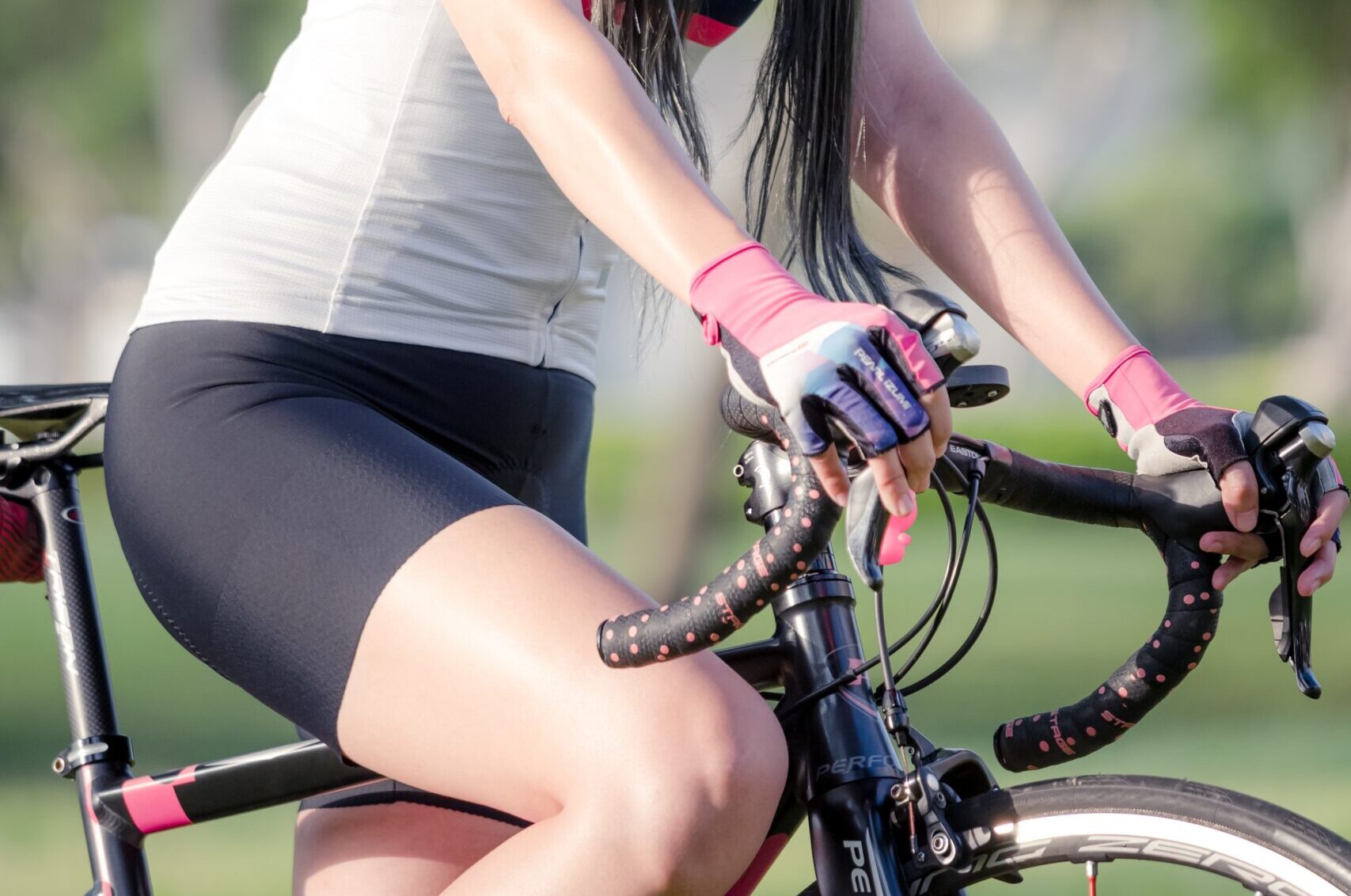How to Get Fit with Cycling: A Comprehensive Guide
Cycling is a low-impact, high-reward form of exercise that offers a multitude of benefits for those seeking to improve their overall fitness and physique. One of the most significant advantages of cycling is its ability to tone muscles, particularly in the legs, core, and upper body. But what muscles does cycling tone, exactly? The answer lies in the unique combination of physical movements involved in pedaling, balancing, and propelling a bicycle forward.
When done correctly, cycling can be an effective way to improve cardiovascular health, boost muscle strength and endurance, and enhance overall athletic performance. The low-impact nature of cycling makes it an ideal exercise option for individuals with joint pain or mobility issues, as it can be modified to suit different fitness levels and goals. Whether you’re a seasoned athlete or a beginner, cycling can be a valuable addition to your fitness routine.
So, how can you harness the power of cycling to transform your physique? The key lies in understanding the specific muscles worked during cycling and incorporating techniques that target these areas. By doing so, you can unlock the full potential of cycling and achieve a stronger, leaner, and more toned body. In this article, we’ll delve into the world of cycling and explore the muscles worked, techniques for toning, and tips for incorporating cycling into your fitness routine.
The Muscles Worked in Cycling: A Breakdown
Cycling is a comprehensive form of exercise that engages multiple muscle groups, making it an effective way to improve overall fitness and physique. When it comes to understanding what muscles does cycling tone, it’s essential to break down the primary muscles worked during this activity. The muscles involved in cycling can be broadly categorized into two groups: the muscles responsible for pedaling and the muscles responsible for balance and stability.
The primary muscles worked during cycling include the quadriceps, hamstrings, glutes, and calf muscles. The quadriceps, located at the front of the thigh, are responsible for extending the knee and straightening the leg. The hamstrings, located at the back of the thigh, are responsible for flexing the knee and bending the leg. The glutes, including the gluteus maximus, gluteus medius, and gluteus minimus, are responsible for extending the hip and generating power during pedaling. The calf muscles, including the gastrocnemius and soleus, are responsible for flexing the foot and ankle.
These muscles work together to propel the bicycle forward, with the quadriceps and glutes generating the majority of the power. The hamstrings and calf muscles play a supporting role, helping to stabilize the leg and maintain pedaling efficiency. Understanding the muscles worked in cycling can help cyclists optimize their training and improve their overall performance.
In addition to the muscles responsible for pedaling, cycling also engages the muscles responsible for balance and stability. These muscles include the core muscles, such as the abs and obliques, as well as the muscles of the lower back. The core muscles help to maintain stability and balance during cycling, while the muscles of the lower back help to support the spine and maintain proper posture.
By engaging multiple muscle groups, cycling provides a comprehensive workout that can help improve overall fitness and physique. Whether you’re a seasoned cyclist or just starting out, understanding the muscles worked in cycling can help you optimize your training and achieve your fitness goals.
Targeting Core Muscles with Cycling
Cycling is a comprehensive form of exercise that engages multiple muscle groups, including the core muscles. The core muscles, including the abs, obliques, and lower back muscles, play a crucial role in cycling stability, balance, and overall performance. A strong core can help improve pedaling efficiency, reduce fatigue, and enhance overall cycling experience.
The core muscles are responsible for maintaining proper posture, stability, and balance during cycling. The abs, including the rectus abdominis and transverse abdominis, help to stabilize the torso and maintain proper posture. The obliques, including the internal and external obliques, help to rotate the torso and maintain balance. The lower back muscles, including the erector spinae and latissimus dorsi, help to support the spine and maintain proper posture.
Cycling can be an effective way to target the core muscles, particularly when combined with specific techniques and exercises. For example, incorporating interval training and hill sprints into a cycling routine can help engage the core muscles and improve overall cycling performance. Additionally, incorporating core-specific exercises, such as planks and Russian twists, into a strength training routine can help improve core strength and stability.
When it comes to understanding what muscles does cycling tone, it’s essential to recognize the importance of the core muscles. A strong core can help improve overall cycling efficiency, reduce fatigue, and enhance overall performance. By incorporating core-specific exercises and techniques into a cycling routine, cyclists can improve their overall fitness and physique.
In addition to the physical benefits, a strong core can also help improve mental toughness and endurance during cycling. By maintaining proper posture and stability, cyclists can reduce fatigue and improve their overall cycling experience. Furthermore, a strong core can help improve balance and coordination, reducing the risk of injury and improving overall cycling performance.
Overall, targeting the core muscles with cycling can be an effective way to improve overall fitness and physique. By incorporating core-specific exercises and techniques into a cycling routine, cyclists can improve their overall cycling efficiency, reduce fatigue, and enhance overall performance. Whether you’re a seasoned cyclist or just starting out, recognizing the importance of the core muscles can help you optimize your training and achieve your fitness goals.
Cycling for Leg Strength and Toning
Cycling is a great way to improve leg strength and toning, as it targets multiple muscle groups in the legs. The quadriceps, hamstrings, and glutes are the primary muscles worked during cycling, and by incorporating different techniques and exercises, cyclists can improve their overall leg strength and toning.
The quadriceps, located at the front of the thigh, are responsible for extending the knee and straightening the leg. The hamstrings, located at the back of the thigh, are responsible for flexing the knee and bending the leg. The glutes, including the gluteus maximus, gluteus medius, and gluteus minimus, are responsible for extending the hip and generating power during pedaling.
To target these muscles and improve leg strength and toning, cyclists can incorporate different techniques into their cycling routine. Hill sprints, for example, are a great way to target the quadriceps and glutes, as they require explosive power and strength to propel the bike up a hill. Interval training, on the other hand, can help improve cardiovascular fitness and increase leg strength by alternating between high-intensity and low-intensity cycling.
Another technique to improve leg strength and toning is to incorporate strength training exercises into a cycling routine. Squats, lunges, and leg press can help improve quadriceps and hamstring strength, while deadlifts and glute bridges can help improve glute strength. By incorporating these exercises into a strength training routine, cyclists can improve their overall leg strength and toning.
When it comes to understanding what muscles does cycling tone, it’s essential to recognize the importance of the leg muscles. By targeting these muscles with different techniques and exercises, cyclists can improve their overall leg strength and toning, leading to improved cycling performance and overall fitness.
In addition to the physical benefits, cycling can also help improve mental toughness and endurance. By pushing through challenging workouts and incorporating different techniques into a cycling routine, cyclists can improve their mental toughness and endurance, leading to improved overall performance.
Overall, cycling is a great way to improve leg strength and toning, and by incorporating different techniques and exercises into a cycling routine, cyclists can improve their overall fitness and performance. Whether you’re a seasoned cyclist or just starting out, recognizing the importance of the leg muscles can help you optimize your training and achieve your fitness goals.
Upper Body Benefits of Cycling
While cycling is often associated with leg strength and toning, it also provides numerous benefits for the upper body. The arms, shoulders, and back muscles are all engaged during cycling, contributing to overall cycling efficiency and stability. Understanding what muscles does cycling tone, including the upper body muscles, can help cyclists optimize their training and achieve their fitness goals.
The arms, including the biceps and triceps, are responsible for holding the handlebars and maintaining control of the bike. The shoulders, including the deltoids and trapezius, help to stabilize the upper body and maintain proper posture. The back muscles, including the latissimus dorsi and rhomboids, help to support the spine and maintain proper posture.
Cycling can help improve upper body strength and toning by engaging these muscles in a variety of ways. For example, standing up while cycling can help engage the arms and shoulders, while leaning forward can help engage the back muscles. Additionally, incorporating strength training exercises into a cycling routine, such as push-ups and rows, can help improve upper body strength and toning.
The upper body benefits of cycling are often overlooked, but they are essential for maintaining proper posture, balance, and control while cycling. By engaging the upper body muscles, cyclists can improve their overall cycling efficiency and stability, leading to improved performance and reduced fatigue.
In addition to the physical benefits, cycling can also help improve mental toughness and endurance. By pushing through challenging workouts and incorporating different techniques into a cycling routine, cyclists can improve their mental toughness and endurance, leading to improved overall performance.
Overall, cycling provides numerous benefits for the upper body, including improved strength and toning. By understanding what muscles does cycling tone, including the upper body muscles, cyclists can optimize their training and achieve their fitness goals. Whether you’re a seasoned cyclist or just starting out, recognizing the importance of the upper body muscles can help you improve your overall cycling performance and achieve a toned physique.
How to Incorporate Cycling into Your Fitness Routine
Incorporating cycling into a regular fitness routine can be an effective way to improve overall fitness and physique. Whether you’re a seasoned cyclist or just starting out, understanding how to incorporate cycling into your fitness routine can help you achieve your fitness goals. When it comes to understanding what muscles does cycling tone, it’s essential to recognize the importance of incorporating cycling into a comprehensive fitness routine.
To incorporate cycling into your fitness routine, start by setting specific goals. What do you want to achieve through cycling? Do you want to improve your cardiovascular fitness, increase your leg strength, or enhance your overall muscle toning? Once you have set your goals, create a training schedule that includes cycling as a regular part of your routine.
A typical training schedule may include 2-3 cycling sessions per week, with at least one day of rest in between. Each cycling session should include a warm-up, a main workout, and a cool-down. The warm-up should include 5-10 minutes of light cardio, such as jogging or jumping jacks, followed by dynamic stretching to prepare the muscles for cycling.
The main workout should include a combination of cycling techniques, such as hill sprints, interval training, and steady-state cycling. Hill sprints, for example, can help improve leg strength and power, while interval training can help improve cardiovascular fitness and increase muscle toning.
Tracking progress is also essential when incorporating cycling into your fitness routine. Use a cycling computer or a fitness tracker to track your distance, speed, and heart rate. This will help you monitor your progress and make adjustments to your training schedule as needed.
In addition to tracking progress, it’s also essential to listen to your body and rest when needed. Cycling can be a high-intensity activity, and overtraining can lead to injury or burnout. Make sure to include rest days in your training schedule and prioritize recovery techniques, such as foam rolling and stretching.
Overall, incorporating cycling into your fitness routine can be an effective way to improve overall fitness and physique. By setting specific goals, creating a training schedule, and tracking progress, you can achieve your fitness goals and enjoy the many benefits of cycling.
Common Cycling Mistakes to Avoid
When it comes to cycling for a toned physique, there are several common mistakes to avoid. These mistakes can not only hinder progress but also increase the risk of injury. Understanding what muscles does cycling tone and how to optimize cycling workouts can help cyclists avoid these mistakes and achieve their fitness goals.
One of the most common mistakes cyclists make is poor posture. Poor posture can put unnecessary strain on the muscles, particularly the back and neck, and can lead to discomfort and injury. To avoid poor posture, make sure to maintain a neutral spine and engage the core muscles to support the body.
Another common mistake is inadequate warm-up and cool-down routines. A proper warm-up should include 5-10 minutes of light cardio and dynamic stretching to prepare the muscles for cycling. A proper cool-down should include static stretching to help the muscles recover. Neglecting these routines can lead to muscle soreness and injury.
Neglecting proper bike fit is also a common mistake. A bike that is too small or too large can put unnecessary strain on the muscles and lead to discomfort and injury. Make sure to get a professional bike fit to ensure that the bike is properly sized and adjusted for your body.
Overtraining is also a common mistake. Cycling can be a high-intensity activity, and overtraining can lead to fatigue, injury, and burnout. Make sure to listen to your body and take rest days as needed. A general rule of thumb is to take one or two rest days per week, depending on the intensity and frequency of your workouts.
Finally, neglecting to track progress is a common mistake. Tracking progress can help you monitor your progress and make adjustments to your training schedule as needed. Use a cycling computer or a fitness tracker to track your distance, speed, and heart rate, and make adjustments to your training schedule accordingly.
By avoiding these common mistakes, cyclists can optimize their workouts and achieve their fitness goals. Remember to maintain proper posture, warm up and cool down properly, get a professional bike fit, avoid overtraining, and track progress to ensure a safe and effective cycling workout.
Maximizing Muscle Toning with Cycling Accessories
Cycling accessories can play a significant role in maximizing muscle toning and improving overall cycling performance. When it comes to understanding what muscles does cycling tone, it’s essential to recognize the importance of proper equipment and accessories. In this article, we’ll explore the role of cycling accessories, such as clip-in shoes and pedals, in maximizing muscle toning.
Clip-in shoes and pedals are designed to provide a secure and efficient connection between the foot and the pedal. This connection allows for more efficient power transfer and can help to reduce fatigue and improve pedaling efficiency. By using clip-in shoes and pedals, cyclists can target the muscles in the legs, including the quadriceps, hamstrings, and glutes, more effectively.
Another benefit of clip-in shoes and pedals is that they can help to improve pedaling technique. By providing a secure connection between the foot and the pedal, cyclists can focus on proper pedaling technique, including smooth and efficient pedaling motions. This can help to reduce fatigue and improve overall cycling performance.
In addition to clip-in shoes and pedals, other cycling accessories, such as cycling gloves and handlebar grips, can also play a role in maximizing muscle toning. Cycling gloves can provide additional grip and control, allowing cyclists to focus on proper pedaling technique and target the muscles in the arms and shoulders. Handlebar grips can provide additional comfort and control, allowing cyclists to maintain proper posture and engage the core muscles more effectively.
When it comes to choosing cycling accessories, there are several factors to consider. First, consider the type of cycling you’ll be doing most often. If you’ll be doing a lot of road cycling, clip-in shoes and pedals may be a good choice. If you’ll be doing more mountain biking or commuting, cycling gloves and handlebar grips may be more suitable.
Second, consider your budget and the level of quality you’re looking for. While high-end cycling accessories may provide additional benefits, they can also be more expensive. Consider your needs and budget when choosing cycling accessories.
Finally, consider the fit and comfort of the accessories. Make sure they fit properly and are comfortable to use. This will help to ensure that you can focus on proper pedaling technique and target the muscles effectively.
By incorporating cycling accessories into your cycling routine, you can maximize muscle toning and improve overall cycling performance. Remember to choose accessories that meet your needs and budget, and consider the fit and comfort when making your selection.








